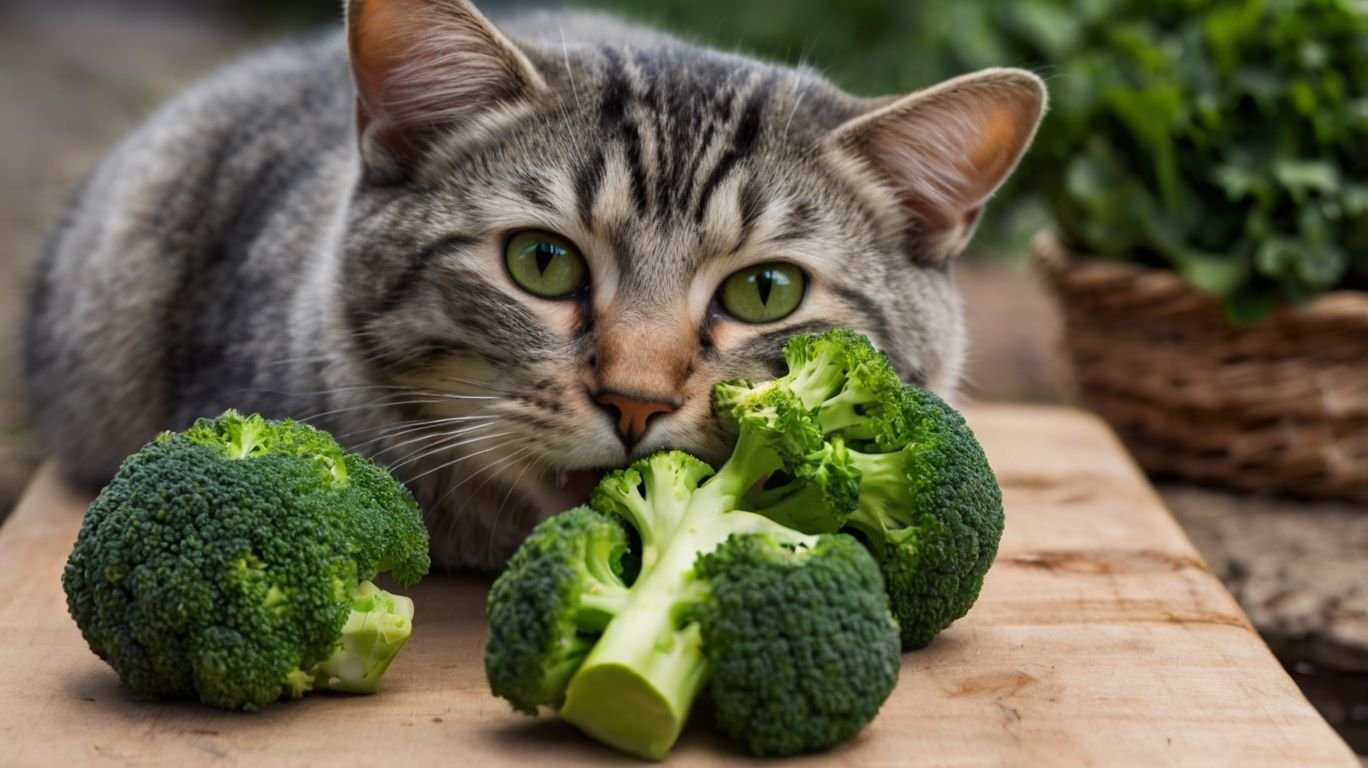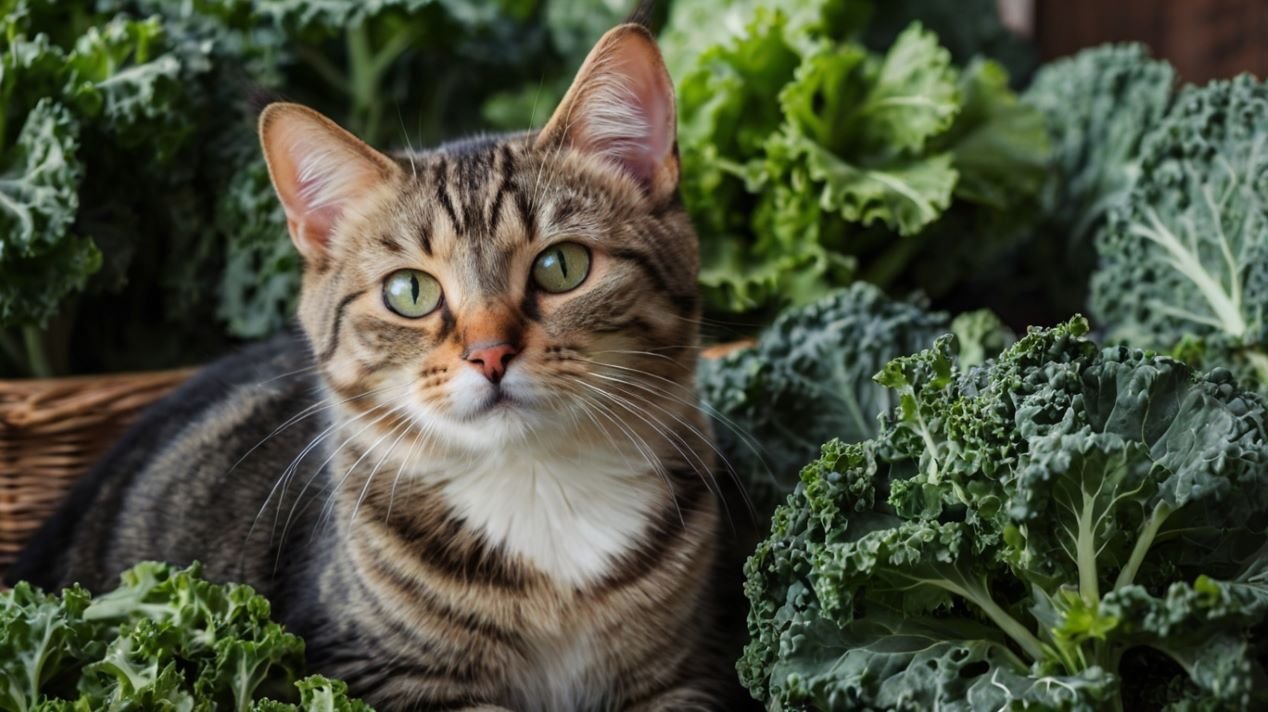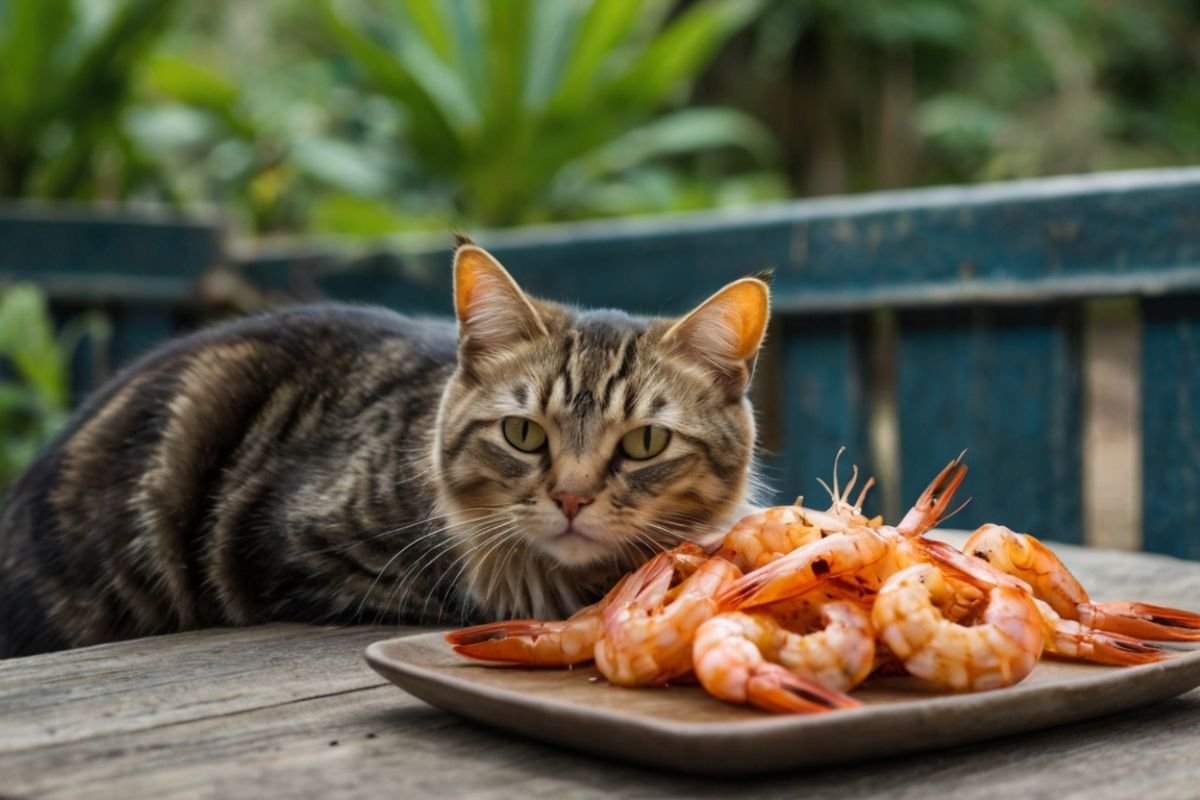You know that moment when you’re making a salad? Your cat shows up with those curious eyes. They watch every move you make. Then you pause with that cucumber slice in your hand. Can I share this with my furry friend?
I’ve been exactly where you are right now. My heart wanted to share everything good with my cat. But my mind worried about safety. After two years with Rio, my orange tabby, I’ve learned so much about this question.
Today, I want to share what I’ve discovered. Not as an expert lecturing you. But as one cat parent talking to another. We both want the same thing – happy, healthy cats who feel loved.
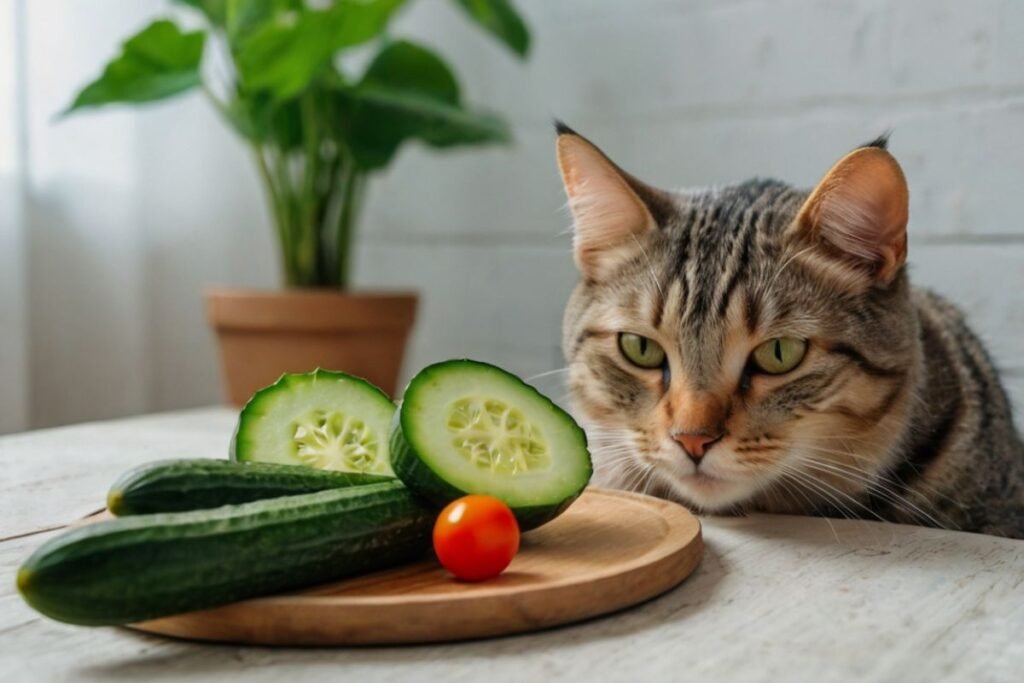
Table of Contents
When I First Wondered About Cucumbers
Let me take you back to Rio’s first summer with me. He was just a kitten then. I was cutting vegetables for dinner. Rio sat on his little haunches, watching me with those bright green eyes.
I held up a cucumber slice. His whiskers twitched with interest. My heart melted a little. But then doubt crept in. Is this safe? Will it hurt him? These questions kept me up that night.
So I did what any worried cat parent does. I researched everything, I called my vet, and I even asked other cat owners at the pet store. What I learned changed how I think about treats for cats.
What I Discovered About Cucumbers
Here’s what surprised me most. Cucumbers are basically water with a crunch. They’re about 95% water. The rest is mostly fiber with tiny amounts of vitamins.
This matters because cats need meat to survive. Their bodies are built for hunting and eating prey. But small amounts of safe plants? They usually handle those just fine.
Think about wild cats. They sometimes eat grass or small plants. Not for nutrition. But maybe for texture or just curiosity. Our house cats still have these instincts.
Also read, Can Cats Eat Broccoli?
My First Experience Giving Rio Cucumber
I remember Rio’s first taste so clearly. I washed a cucumber until it practically sparkled. Then I cut the tiniest piece you can imagine. Smaller than my pinky nail.
I placed it near his food bowl. Rio approached like he was investigating something suspicious. One careful sniff. Then another. Finally, he gave it a tentative lick.
His face was priceless. You know that look cats get? Like they’re processing something completely new. He chewed thoughtfully. Swallowed. Then looked at me as if to say, “That was… interesting.”
I watched him like a hawk for the next 24 hours. No upset stomach. No changes in behavior. Just Rio being his normal, playful self.
What My Vet Taught Me
Dr. Martinez is one of Rio’s vets. She’s seen every worry I’ve had. When I asked about cucumbers, she smiled knowingly.
“You’re not the first worried cat parent to ask this,” she said. “Cucumbers aren’t toxic to cats. But they’re not necessary either.”
She explained it like this. Imagine your cat’s diet as a perfectly balanced meal. Cucumbers are like a small garnish. Nice, but not essential. Too much garnish overwhelms the main dish.
This perspective changed everything for me. I stopped worrying about whether Rio needed cucumbers. Instead, I focused on whether he enjoyed them safely.
The Real Benefits I’ve Noticed
Over time, I discovered some genuine benefits. Not life-changing ones. But small improvements that made me smile.
Extra water intake. Rio has always been a light drinker. During hot summer days, that tiny bit of cucumber water helps. It’s not much. But every drop counts when you’re trying to keep your cat hydrated.
Mental stimulation. This one surprised me. Rio treats cucumber pieces like little toys. He bats them around the kitchen floor. Pounces on them. It’s adorable and gets him moving.
Bonding time. Here’s the benefit I treasure most. Sharing safe treats creates special moments. Rio associates these times with positive attention from me. It strengthens our connection.
The Scary Moments That Taught Me Caution
Not everything went smoothly. I made mistakes that taught me valuable lessons. Let me share them so you can avoid my errors.
The piece that was too big. Early on, I gave Rio a chunk that seemed small to me. But for a cat? It was huge. He tried to swallow it whole and started coughing. My heart nearly stopped.
I learned to cut pieces even smaller. Think about the size of a kernel of corn. That’s more appropriate for most cats.
The unwashed cucumber incident. I was lazy one day. Didn’t wash the cucumber properly. Rio got a bit of stomach upset. Nothing serious. But it reminded me that preparation matters.
Now I wash every piece of produce like I’m preparing it for a baby. Because in many ways, I am.
How I Learned to Read Rio’s Signals
Cats communicate differently than we do. Learning Rio’s signals took time. But it made all the difference in keeping him safe and happy.
The interested approach. When Rio wants to try something, he approaches slowly. His ears are forward. His body language says “curious but cautious.”
The polite rejection. Sometimes Rio sniffs and walks away. No drama. No fuss. He’s simply saying “no thank you.” I’ve learned to respect this completely.
The “I’m not feeling well” signs. This was crucial to learn. Rio gets quieter when his stomach bothers him. He might hide under the bed. His appetite changes. These signals tell me to stop whatever new thing I tried.
My Method for Introducing Any New Treat
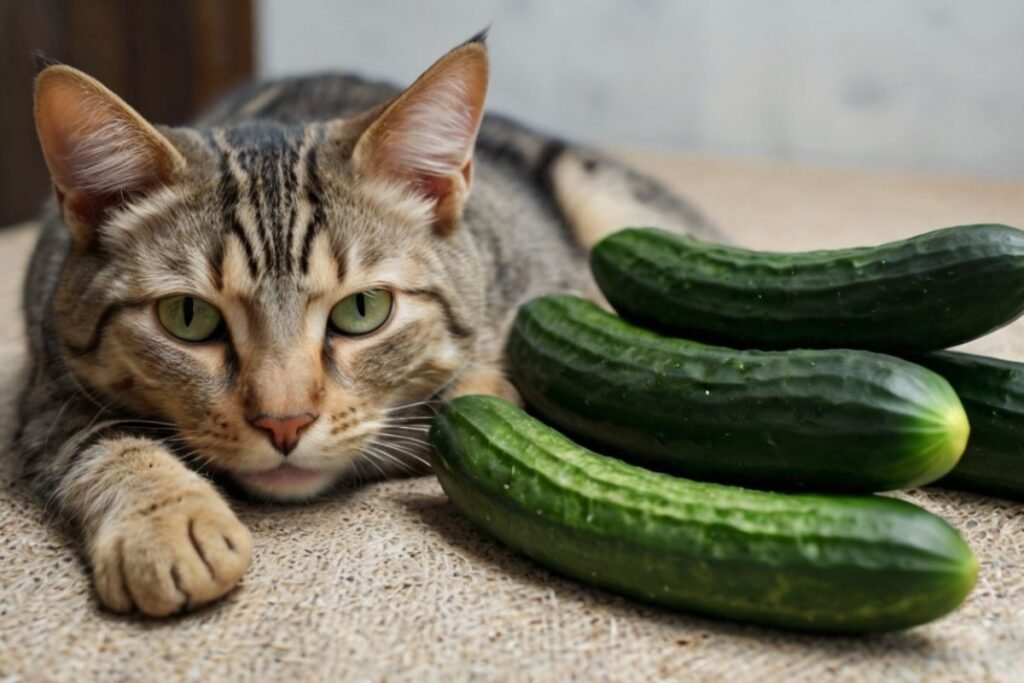
After trial and error, I developed a system. It works for cucumbers and any other safe treat I want to try with Rio.
Day one – Tiny test. One piece smaller than a pea. I sit nearby while Rio investigates. No pressure. Just quiet presence.
Day two – Watch and wait. I observe everything. How’s his appetite? Are his bathroom habits normal? Is he his usual playful self?
Day three – Decision time. If all goes well, I might offer another tiny piece. If there were any concerns, I stop completely.
This method has saved us both from problems. It also helps me feel confident about what I’m doing.
When Things Go Wrong – My Emergency Plan
Despite being careful, problems can happen. I learned to prepare for them. Here’s what I do when Rio shows any concerning signs.
Mild stomach upset. If Rio seems a bit off but not sick, I withhold the new treat. I offer extra water. Most importantly, I watch him closely.
Vomiting or diarrhea. This gets my immediate attention. I remove all treats. I make sure he has fresh water. If it continues, I call Dr. Martinez.
Behavioral changes. If Rio acts differently – hiding, not playing, refusing food – I treat it seriously. These signs often mean something’s wrong.
Having a plan reduces my panic. It also helps me make better decisions when I’m worried.
What I’ve Learned About Other Cats
Rio isn’t the only cat in my life now. Friends bring their cats over sometimes. I’ve learned that every cat is unique.
My friend Sarah’s cat, Whiskers, loves cucumber pieces. She gets excited when she sees them. But Tom’s cat, Shadow, couldn’t care less. He sniffs once and walks away with dignity.
Neither response is wrong. They’re just different personalities expressing their preferences. As cat parents, our job is to respect these differences.
The Mistakes I See Other Cat Parents Make
Through online groups and vet visits, I’ve noticed common mistakes. I want to share them so you can avoid the same pitfalls.
Giving too much too fast. Enthusiasm is wonderful. But cats need slow introductions to new foods. What seems like a tiny amount to us can overwhelm their systems.
Ignoring individual preferences. Some people keep pushing treats their cats clearly don’t want. This creates stress for everyone involved.
Forgetting about balance. Treats should never replace proper nutrition. I’ve seen cats who fill up on treats and ignore their regular food. This creates health problems over time.
How I Handle the “Viral Video” Question
People often ask me about those videos. You know the ones – cats jumping when they see cucumbers. Friends sometimes joke about trying this with Rio.
Let me be clear about this. Those videos show cats being scared. The cucumber itself isn’t the problem. It’s the surprise that frightens them.
I would never intentionally scare Rio for entertainment. It would damage the trust we’ve built together. Plus, chronic stress can cause real health problems in cats.
If you want to see your cat’s reaction to cucumbers, do it kindly. Let them discover it naturally during their normal routine.
My Simple Recipe That Rio Actually Enjoys
After lots of experimentation, I found a combination Rio loves. It’s simple and uses ingredients I trust.
I start with one thin cucumber slice. Then I add a tiny bit of plain cooked chicken. Sometimes I include a small amount of plain pumpkin. Not the pie filling – just pure pumpkin.
Rio seems to enjoy the familiar chicken taste with the new cucumber texture. The pumpkin adds a bit of sweetness that appeals to him.
I prepare this maybe once a week. It’s become our special bonding time. Rio knows when I’m making his “special treat” and comes running.
Questions I Asked My Vet (And Her Answers)
Dr. Martinez has been patient with all my questions. Here are the ones that helped me most.
“Is it okay if Rio doesn’t like cucumbers?” Her answer: “Absolutely. Cats don’t need cucumbers to be healthy. If he’s not interested, don’t worry about it.”
“How do I know if I’m giving too much?” She said: “Watch his regular eating habits. If treats affect his appetite for regular food, cut back.”
“What if he seems to love them?” Her response: “Even if he enjoys them, moderation is key. Love doesn’t equal need when it comes to cat treats.”
These conversations gave me confidence in my decisions about Rio’s diet.
The Seasonal Changes I’ve Noticed
Living with Rio through different seasons taught me interesting things. His interest in cool treats like cucumbers changes with the weather.
During hot summer months, he seems more interested in the cool, watery crunch. Winter finds him preferring his regular warm food. I’ve learned to follow his natural rhythms rather than forcing anything.
This seasonal awareness has made me a better cat parent overall. I pay attention to how weather and temperature affect Rio’s preferences.
Building Trust Through Food Experiences
The most valuable thing I’ve learned isn’t about cucumbers specifically. It’s about building trust through food experiences.
When I approach new treats with patience and respect for Rio’s choices, our bond grows stronger. He learns to trust my judgment. I learn to read his signals better.
This trust extends beyond food. Rio now comes to me when he doesn’t feel well. He seeks me out for comfort. This deeper connection is worth more than any treat.
My Advice for Worried Cat Parents
If you’re reading this because you’re worried about giving your cat cucumbers, I understand completely. That worry comes from love. It shows you’re a caring cat parent.
Here’s what I wish someone had told me when I was in your shoes. Start small. Watch carefully. Trust your instincts. If something feels wrong, stop.
Your cat doesn’t need cucumbers to be happy. They need your love, attention, and good nutrition. Everything else is just a bonus.
Don’t let worry paralyze you from trying safe new experiences. But don’t let enthusiasm override caution either. Find that middle ground where you both feel comfortable.
When I Worry Less and Enjoy More
Two years with Rio has taught me something important. The goal isn’t perfect cat parenting. It’s loving, attentive cat parenting.
I still research new treats carefully. I still watch Rio closely when trying anything new. But I don’t lose sleep over these decisions anymore.
I’ve learned to trust the strong foundation we’ve built together. Rio is healthy and happy. He knows he’s loved. The rest is just details.
Looking Forward – What I’ve Learned
As I write this, Rio is napping in his favorite sunny spot. His little belly rises and falls peacefully. This moment reminds me why all the careful research and worry is worth it.
We’ve shared many cucumber moments together. Some he enjoyed. Others he politely declined. All of them strengthened our bond and taught me something new about being his human.
The question “Can cats eat cucumbers?” has a simple answer: yes, in moderation. But the deeper question – “How do I keep my beloved cat safe while sharing life’s small pleasures?” – that answer is more complex.
It requires patience, observation, and most importantly, love. It means putting your cat’s wellbeing above your desire to share everything with them.
My Final Thoughts for You
If you decide to offer your cat a tiny piece of cucumber, approach it with the same love that made you research this question. Start small. Watch carefully. Respect their choice.
If they enjoy it, wonderful. You’ve found a new way to bond. If they don’t, that’s wonderful too. You’ve learned something new about your cat’s preferences.
Either way, you’ve shown the kind of thoughtful care that makes someone a great cat parent. Your cat is lucky to have someone who loves them enough to ask these careful questions.
The cucumber itself matters less than the love behind your concern. That love – that’s what your cat treasures most. Everything else, including cucumbers, is just a small part of the bigger, beautiful relationship you share.
Remember, we’re all learning as we go. Every cat teaches us something new. Trust yourself, trust your love for your cat, and enjoy the journey together.

Shahriar Robin is the creator of WhatPetsCanEat.com, a passionate pet lover and dedicated cat dad to Rio, a curious two-year-old orange feline who inspired this website. With a love for animals and a knack for research, Shahriar shares trusted, easy-to-understand information to help fellow pet owners make safe, healthy food choices for their furry friends.
